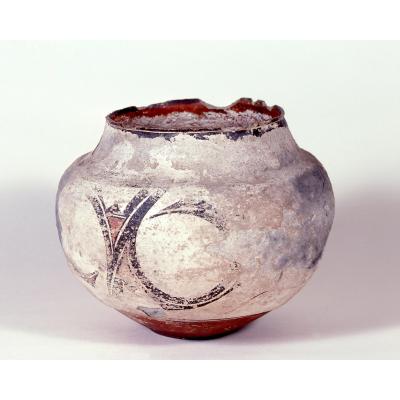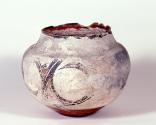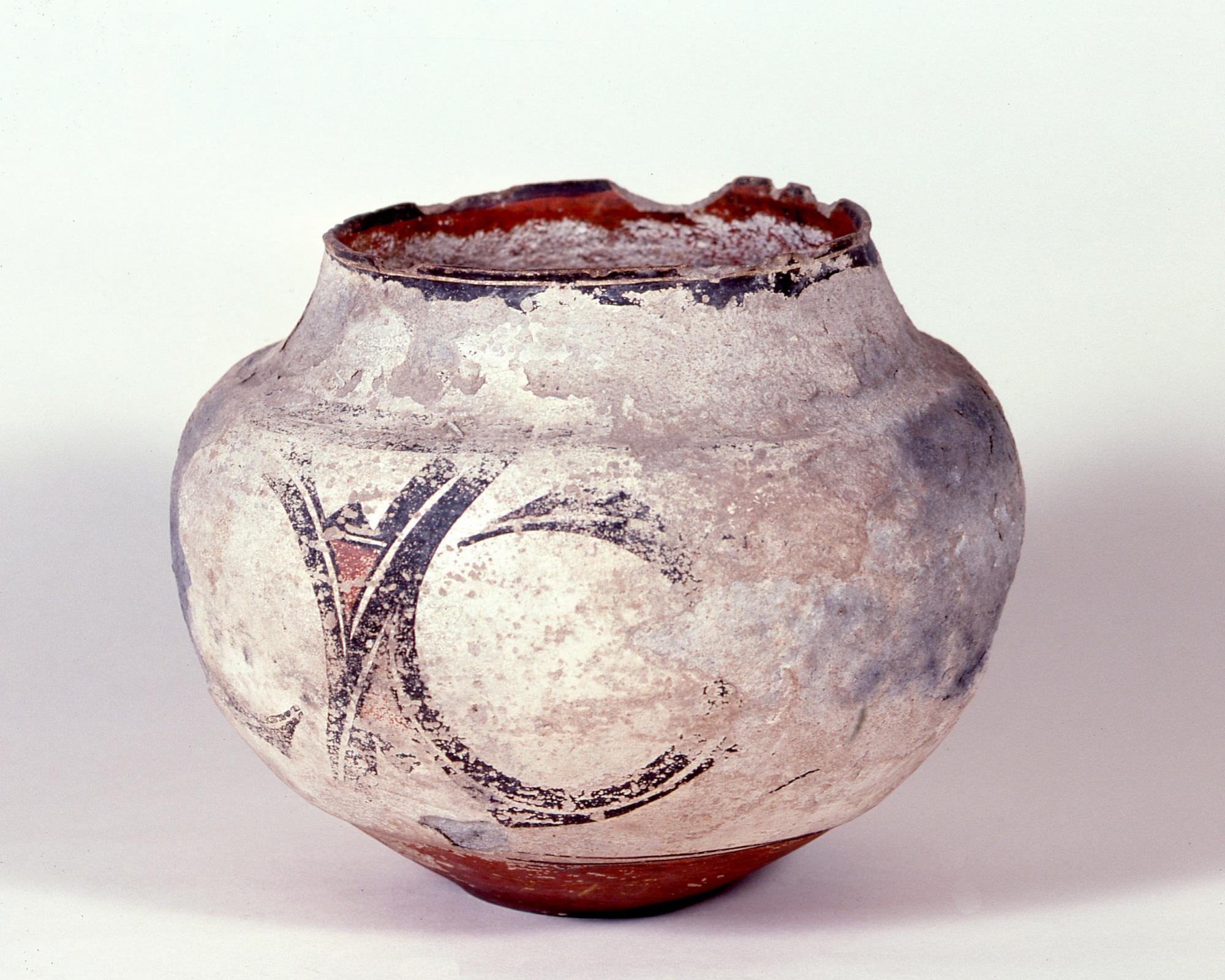
Photograph by Addison Doty. Copyright 2010 School for Advanced Research.
Water jar | K'yabokya de'ele
Date: c. 1860
Artist or Maker: Unknown
Dimensions:
Dimensions: 25.4 × 31.8 cm (10 × 12 1/2 in.)
Weight: 2.4 kg (5.35 lb.)
Medium: clay | paints
Place Made:
Zuni Pueblo, McKinley County, New Mexico, Southwest, United States, North America
Object Number: IAF.775
Not on view
Tribal Collection Review RemarksJim Enote and Octavius Seowtewa during collection review visit February 17 and 18, 2010 (Events Record “Collection Review: Zuni Tribe, Review 4”): Mr. Enote and Mr. Seowtewa did not agree with Rick Dillingham’s assertion that this is an Acoma design. Both the form and decorative motifs are indicative of Zuni. The motif used on the neck is of cloud designs. The body is decorated with large rainbird designs. The odd condition of this jar should be researched further; it is in reasonably good condition on one side, but the slip is flaking badly and there is considerable chipping on the on the other. The question was raised if it might have been used as a flower pot, which might explain its poor and uneven condition. There is a dark stain on the interior surface of the jar which could have been from mold forming in the soil if it was used as a flower pot.
The word for a water jar in Zuni is “k'yabokya de'ele,” which translates to “water container vessel” in English. The intended use for these jars was to store and carry water, but they could also be used to store other items.
In Collection(s)
The Indian Arts Research Center, in collaboration with Native American community scholars, strives to present accurate collections records. Records may be updated as new information becomes available and is reviewed with the Native American community having cultural affinity to particular items. Please write to iarc@sarsf.org if you have questions or concerns related to the documentation.


